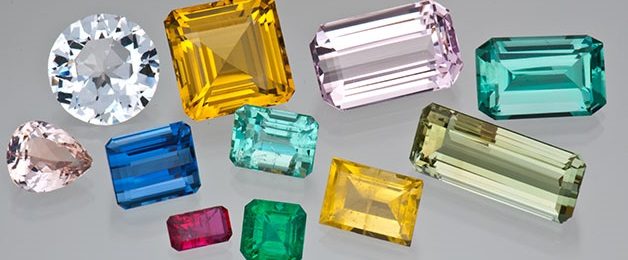The crown jewel of the Topkapi Palace Museum is the 86-carat pear-shaped Spoonmaker’s Diamond, which is the fourth largest diamond in the world.
The Kaşıkçı Elması is surrounded by a double-row of 49 old-mine cut diamonds.
Its origin is a classic mystery. Like many other historic diamonds, it is difficult to separate fact from fancy. No one is sure if the world’s fourth-largest diamond had been found in a rubbish heap or was pawned by Napoleon’s mum, and that is only the beginning…
How did the incredible Spoonmaker’s Diamond, come to reside in the Topkapı Palace Museum in Istanbul? The museum’s records list a stone called the Spoonmaker’s Diamond, which is noted as having belonged to the 17th century Sultan Mehmet IV. However, that stone, along with its gold, weighs only 10–12 g (50–60 carats), which is much smaller than the present Spoonmaker’s Diamond. Several differing accounts exist regarding the origin of the Spoonmaker’s Diamond. The most popularly accepted version was hand-written by Rasid, the Ottoman court’s official historian, and goes something like this:
A poor fisherman was wandering idly by the shore near Istanbul, when he found a large shiny stone, which he turned over and over, not knowing what it was. After carrying it about in his pocket for a few days, he stopped by the jewellers’ market, showing it to the first jeweller he encountered. The jeweller took a casual glance at the stone and appeared uninterested, telling the poor fisherman that – ‘It’s a piece of glass, I’ll take it off your hands… I’ll give you three spoons. You brought it all the way here, at least let it be worth your trouble.’ Later, the diamond was bought by a vizier, on behalf of the Sultan.
Ali Pasha of Tepelena
A persistent element in several accounts of the diamond’s origins links it with the well-known Ali Pasha of Tepelena, who in the late 18th and early 19th Centuries was the Ottoman governor of much of present-day Albania and Greece, and who set himself up as a virtually independent ruler.
The Spoonmaker’s Diamond is as well asserted to have been in Ali Pasha’s possession before arriving at the Ottoman capital. By some versions, it had been once worn by Kira Vassiliki, Ali Pasha’s favourite wife in his harem and a powerful female figure. The eventual passing into the Sultan’s hands might have taken place either during Ali Pasha’s lifetime, as part of his complicated dealings with the central Ottoman government, or after his execution, when his possessions were confiscated by the Sultan.

Letizia Ramolino- Wikipedia Commons
Captain Camus & Napoleon’s Mum
Like a pearl necklace, there are stories upon stories linking the origins of the Spoonmaker’s Diamond with historic events in the town of Preveza. In 1797 the town was ceded to France and garrisoned by 700 of Napoleon’s French grenadiers under General La Salchette, together with some 260 armed Greek citizens from Preveza and Albanian Souliotes. However, in the Battle of Nicopolis of 12–13 October 1798, this force was overwhelmed by 7000 Turkish-Albanian warriors under Ali Pasha and his son Muhtar. After the battle, nine French officers were taken as prisoners and sent to Sultan Selim III in Istanbul, among them Captain Louis-Auguste Camus de Richemont. Camus remained in captivity until 1801, when he was ransomed and returned to a long and distinguished military career, eventually attaining the rank of general. Onto the above historically attested facts was added an unattested story, according to which Captain Camus was the lover of Napoleon Bonaparte’s mother Letizia Ramolino. After receiving the news of the capturing of her ‘lover’, Letizia contacted Sultan Selim III and allegedly sent a “Big Diamond” by ship to Preveza as a present for the Sultan, with the expectation of her lover’s liberation.

Spoonmaker’s diamond-Topkapi Palace-Atlas Obscura
Finally, Captain Camus and the other surviving French soldiers were liberated, while the diamond remained in the Topkapi Palace, in possession of Sultan Selim III.
As noted, there is no clear historical evidence to either a relationship between Captain Camus and Letizia Ramolino or to her having sent the diamond to the Sultan.
Much later Camus, by then a General, published his memoirs in three volumes. In one passage he does mention that during their year in possession of Preveza, the French soldiers carrying out fortification work in a place called Mazoma revealed in their excavations the eastern cemetery of Ancient Nicopolis. There, many treasures came to light (jewellery, lamps, pottery, etc.) all of which were pillaged by the soldiers. However, Camus makes no reference to a big diamond having been among these ancient treasures and no reference to the grand romance?
For the love of Diamonds & Gemstones go to Rocks & Co!
References:
Atlas Obscura
Wikipedia
Topkapi Palace Museum







